Sony X85K Reviewed at $899.00 (55")
Product Name: Sony X85K
Product Description: 2022 4K LED LCD TV
-
Design - 9/10
9/10
-
Video Quality - 8.5/10
8.5/10
-
Ports & Connectivity - 9.2/10
9.2/10
-
OS, Apps and Features - 9.1/10
9.1/10
-
Price / Quality - 9/10
9/10
Summary
Reviewed at $899.00 (55″)
Pros
- Good SDR brightness
- Great out of the box performance
- Low input lag
- HDMI 2.1 with ALLM, VRR and HFR
Cons
- Mediocre HDR brightness
- Narrow viewing angles
- No sound immersion
- Missing a few Google TV features
Cheapest Places to Buy :
*We are a reader-supported website. When you buy through links on our site, we may earn a small affiliate commission at no extra cost to you. Home Media Entertainment does not accept money for reviews.*
A couple of months ago we had the opportunity to test Sony‘s new X80K which was a lower tier TV, ideal for anyone on a tight budget. Today in our Sony X85K review we will take a step up the ladder and look at the replacement of last year’s X85J. The unit we have for testing is the 55″ size.
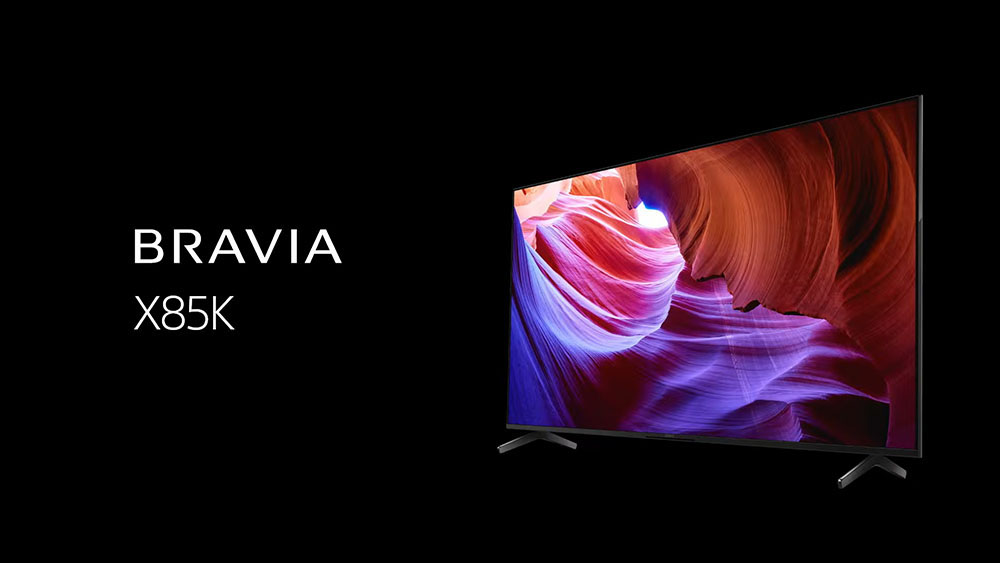
The X85K is placed between the X80K and the Bravia XR X90K and by looking at the specs we don’t find any major differences from last year. In fact we could say that on paper the X85K is exactly the same as was the X85J. Compared to the X80K, the X85K has many similarities but also a couple of major differences. The 100/120Hz panel and the HDMI 2.1 ports to be more specific which the X80K is missing.
Going over the specs we see that the X85K is a LED LCD TV using a 100/120Hz VA panel with a Direct LED backlight system while processing duties are handled by the familiar X1 4K HDR processor. The TV supports both HDR10 and Dolby Vision, uses a simple 2.0 channels audio system with X-Balanced speakers and comes with the latest Google TV. For another year, the X85K is the most affordable Sony TV that includes HDMI 2.1 ports so if you are a gamer on a tight budget this may be the ideal one for you.
From all the above we are curious to see if there is any actual performance difference between the X85K and the 2021 X85J. So without any further delay let’s start our analysis.
Design
The X85K’s design is very similar to both the X85J and this year’s X80K. But looking close to their designs we can say for sure that the X85K borrows the X80K’s look and to a lesser degree last year’s offering as there are some minor differences between the two but not big enough to be of any importance.
Overall build quality and materials are the usual you should expect from such a low category. Everything seems sturdy but you are not going to get anything premium that we find in the top tiers.
The TV’s overall thickness was measured around 2.8″ (7 cm) making it slim enough to look nice when placed on a wall. Also the connection ports are all looking sideways but these are still hard to reach in case you want to wall mount the TV. The borders around the panel have the typical thickness for a low cost model so don’t expect to find these extremely thin borders that some top releases come with.
The back of the X85K features Sony’s familiar checkerboard design in order to make it a little bit more interesting, although this is not a sight that you are going to look at very often. On the far right are the connection ports, on the far left the power connector and in the middle the VESA wall mount holes. A pretty standard layout among many Sony models.
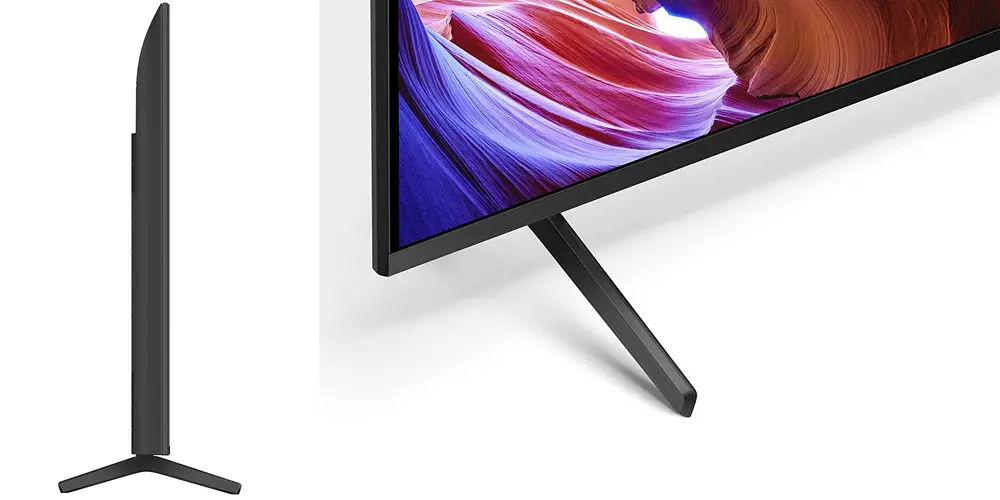
The stand is also the same as it follows the fairly standard bench type that offers the TV more stability but on the other hand you need a bigger furniture if you plan on placing it on one instead of the wall. The TV was fairly stable with little wobble but bigger sizes tend to move more than the smaller ones.
In terms of cable management the only thing you get is special clips that attach at the back of each leg in order to drive your cables through them. There are no special grooves on the back panel or any hollow legs to drive the cables through them.
The 2022 remote Sony has been using is the same across their entire lineup with the only difference being its looks with the more premium models getting a metal one instead of the plastic we find in most middle and lower tier models.
The remote’s buttons have been reduced as the numerical pad has been taken out (there is a simple 123 button for that, that brings a numerical pad on screen) and the overall layout has become simpler and easier to handle.
As a result the updated remote feels less cluttered and easier to everyday use. Design wise the remote of the X85K is no different from the other higher tier offerings.

We really liked Sony’s 2021 remote but to be honest it had too many buttons with many of them never to be used. So making the remote smaller and simpler was the right thing to do and we do love what they have come up with. Another plus is that it’s exactly the same as the one used in premium models so you don’t feel like you are missing anything.
The X85K is exactly the same as the X80K and very similar to the X85J. Build quality is good enough for its price, materials are the standard for its category and the new remote is a nice small upgrade when it comes to usability.
Video Quality
Processor technology used
The Sony X85K is using the same X1 4K HDR processor that is being used by both the X80K and the 2021 X85J so we are expecting more or less very similar performance when it comes to its processing capabilities, although we cannot be certain if this is exactly the same chip as the X85J was using last year.
But looking at the specs sheet it seems to support all the same features so it is highly likely that Sony hasn’t changed anything here meaning that in terms of picture processing the new model is like for like with the two above mentioned models.

One of the characteristics of the X1 processor is Object-based HDR remaster with which the color in individual objects on screen is analyzed and the contrast adjusted, unlike most TVs where contrast is only adjusted along one black-to-white contrast curve. Because objects are remastered individually, this TV can reproduce greater depth, textures, and more real pictures.
There is also Dynamic Contrast Enhancer which automatically adjusts contrast settings according to your environment in order to provide clearer and more defined colors.
The TV also uses Sony’s 4K X-Reality PRO. By using this picture processing technology the X85K is able to up-scale any kind of source content up to 4K without any loss of information or introduction or upscaling artifacts. 4K X-Reality PRO is using a variety of noise reduction techniques to sharpen and refine images while patterns in images are compared with patterns stored in a unique database to find the best hue, saturation, and brightness for each pixel.
As we always do in our reviews we put the X85K through a series of tests by using lower quality and resolution content in order to determine how everything shows up in 4K. This included videos in 480p, 720p and 1080p along with broadcasting material.
Keep in mind that the quality of the source material is always important. But from what we saw the X85K upscaled everything nicely and we didn’t notice any abnormal behavior during testing.
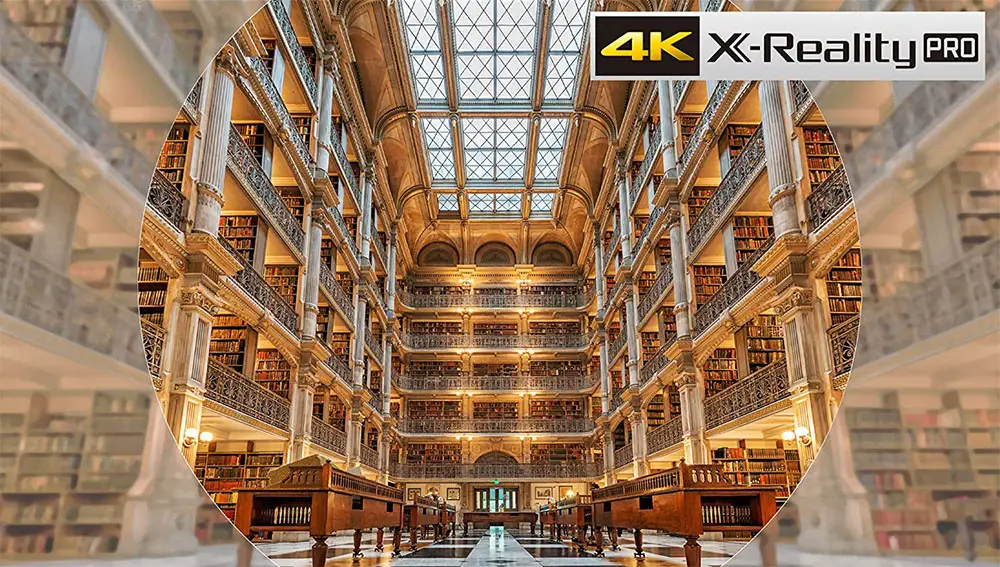
Lighting technology used
All the low budget UHD series models below the Bravia XR series gets the low performing Direct LED light system without Local Dimming. This was the case with the X80K and it couldn’t be any different with the X85K either.
The Direct LED system is using light behind the included VA panel but is much less capable than a mini LED or even a FALD system which means far less brightness output, less light accuracy and lower contrast which means that blacks will appear more greyish than true blacks.
To be honest we were not surprised as having a Direct LED system is pretty common the last few years in Sony’s lower end category and in line with what we have seen in many other TVs with a similar price. At least the VA panel in combination with the Direct LED light system makes the X85K much less prone to any major burn-in problems that plague many OLED models.
Brightness / Contrast
One of the most important characteristics of a HDR TV is no other than its brightness output. It’s unfortunate that many lower tier HDR TVs don’t have the necessary brightness output to make HDR justice even with manufacturers advertising them as such. As the X85K seems to be so similar to the X85J we were curious to see if our measurements would be similar.

In our SDR brightness test we used the Custom Picture mode with Expert 1 color temperature and maximum brightness. In our 10% white window test the X85K was able to output 518 nits of brightness which is good for SDR content and indeed really close to the X85J.
As for our HDR brightness test over a 10% window we managed to get 552 nits which is good but not great and although most of the times the TV can be satisfactory bright some highlights will fail to impress. Again the X85K measured almost the same as the X85J. No noteworthy changes to be found.
You can get a brighter image if you want but this will not change the peak brightness and will only make the content look more washed out.
Brightness levels followed the EOTF reference values really close up to its roll-off point but we did notice some slight deviations which were not all that noticeable to make a huge difference.
The X85K is using a VA panel which means that in terms of contrast things are very good with blacks reaching deeper tones and not appearing more grey instead. There is no local dimming here but the performance of the TV was decent enough as it is and for a low cost unit like this you cannot ask for more.

From everything we saw the X85K behaved really close to the X85J. Small differences here and there were to be expected but all numbers showed that we have no changes from last year’s release.
Viewing angles
The X85K uses a VA panel so the viewing angles we get are not so good. This is not the fault of the TV itself but rather the display technology being used as all VA equipped TVs are suffering from bad viewing angles. Sony has been implementing certain tech to combat this in their top offerings named X-Wide Angle and X-Anti Reflection technologies but unfortunately these can be found only in higher tier offerings.
The X85K unfortunately does not use these extra filters so from what we saw we would say that up to 25-30 degrees the TV retains good image quality. But anything above that colors shift, brightness and black levels integrity takes a huge hit and the overall image quality degrades a lot.
As a result the TV may not be suitable for use in a family room where many members will be using it from various angles. In case you plan on buying this one for this purpose we would suggest you to try it out first before making a decision if it is good enough.

HDR support
HDR support is another area where there is practically no difference the last few years as it seems that most manufacturers have chose a side to go with.
For 2022 Sony went for parity so all their new releases support the same HDR formats no matter the capabilities of the TV itself which is more of a marketing thing and not for the best of what the TV can really do.
In total the X85K features the standard trio of HDR protocols that include the basic HDR10 which is required for 4K UHD playback, HLG that is used in broadcasting and lastly the more advanced Dolby Vision that uses dynamic metadata and offers the best quality from the three available.
For one more year it seems that Sony stays away from Samsung’s HDR10+ and frankly if there is no major development in the future we don’t see Sony ever supporting it. If you really need both HDR10+ and Dolby Vision you will have to look for another manufacturer like Hisense or depending the region you live, Panasonic or Philips.
Color coverage
The X85K comes with wide color gamut support which is one of the fundamental requirements for HDR content viewing as it can make the colors look more vivid and lifelike.

From a specs perspective nothing have changed from last year as the same tech seems to be used. One of these technologies is what Sony calls a TRILUMINOS display which is a technology that the TV uses in order to display a wider color palette and more natural shades and hues. The X85K is using the Triluminos PRO display to be exact.
As for the numbers, we measured a 94% coverage in the DCI-P3 color space which is really good while on the more wide REC.2020 color space we got a coverage of 70% which is in line with the category of this model.
Overall the X85K seems to perform slightly better than the 2021 X85J but the difference is too small to be seen with naked eyes so don’t expect anything major here.
Before calibration the X85K had amazing color accuracy with only a few white balance problems while all colors had values below the DeltaE limit of three. Both of them could be further improved with calibration but even without any we were really surprised by how good everything looked right out of the box.
Color gradients were very good although we did notice some slight banding with some green shades but nothing noteworthy to talk about. There is also two Noise Reduction functions called Random Noise Reduction and Digital Noise Reduction that you can use but keep in mind that you are going to loose some fine detail if enabled so use them wisely.

Motion performance
We move on to our next part which includes our motion performance tests. It seems that nothing major has changed in the X85K from last year as it comes with a 100/120Hz panel along with Sony’s Motionflow XR 960. The X85K is missing a few key motion handling features because it doesn’t use the more advance Cognitive Processor XR that we find in more top tier units.
You have the option to use either the standard motion interpolation system or use the Black Frame Insertion (BFI) interpolation that is adding black frames in between individual frames and can potentially smooth out motion. BFI can be enabled by turning Clearness to max if you use the Custom setting in the MotionFlow menu.
BFI was able to improve overall motion, as is always the case, but the TV had exactly the same image duplication issues we had seen in some other Sony releases. As we had mentioned previously this is not a problem visible all the time but in particular scenes you can notice it. And keep in mind that in general BFI has also a negative effect on brightness due to the black frames that are inserted.
Overall solid performance but not without a few issues that were to be expected as the X85K does not change anything compared to the X85J. Also keep in mind that you cannot use both VRR and BFI so you have to choose which one you prefer the most.
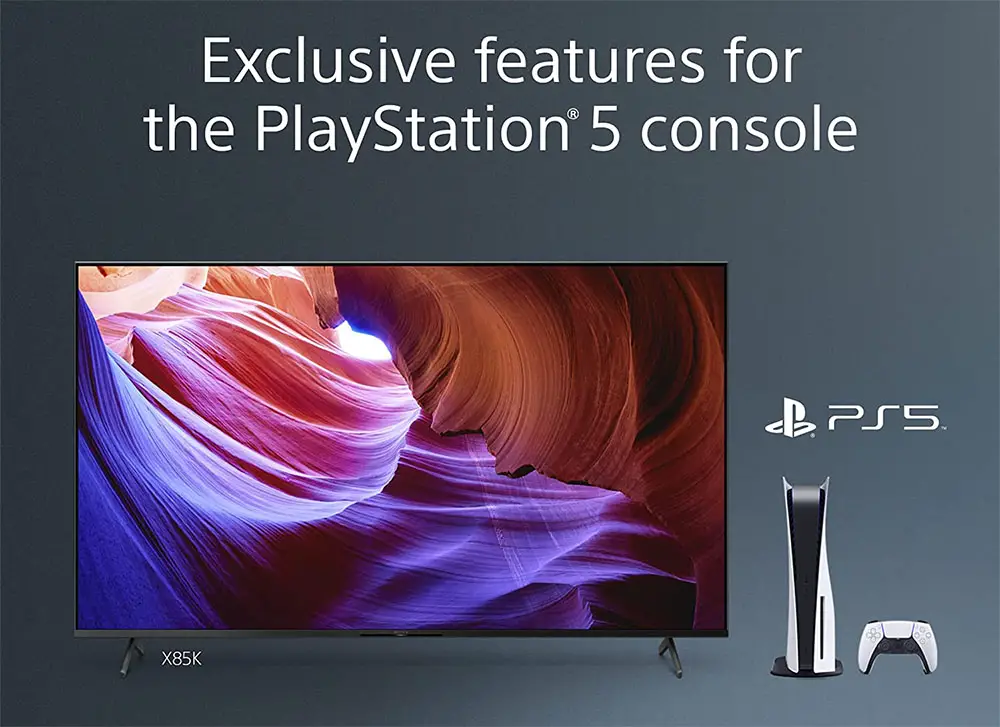
Input lag
Onto our input lag tests next and here we are expecting to see good values overall. After all most TVs nowadays, even low budget ones, offer extremely low input lag values making them excellent choices for gaming purposes.
According to our measurements the X85K measured an average of 16ms input lag in both 1080p and 4K resolutions at 60Hz with the use of Game mode. At 120Hz we measured 7ms in both 1080p and 4K resolutions which is amazing and will result in a completely satisfying gaming experience.
From these numbers you can understand that the X85K is a real treat when it comes to gaming. The numbers are very similar to last year so this is another area where we don’t find any difference from what we saw in the X85J. Outside of Game mode input lag was measured at 91.5ms which again is really close to last year.
We should also not forget to mention that the TV supports Auto Low Latency Mode (ALLM) that can be used with any devices that support that like the PS5 and Xbox consoles and can greatly benefit users. As with all Sony TVs there is no HGiG mode but we do get Auto Genre Picture Mode and Auto HDR Tone Mapping which are Playstation 5 specific features.
Thankfully the X85K comes with VRR support out of the box unlike the X85J that we had to wait for an update. HDMI Forum VRR and G-Sync are supported but not FreeSync.

For our real world testing we connected our PS5 and played a bit of Astro’s Playground. The game supports VRR and from what we experienced everything was perfect. No delays, no slow response times and no VRR issues. The TV did great and can be considered an excellent low cost gaming offering.
Image quality impressions
We were trying to find any meaningful differences between the X85K and the 2021 X85J but to be honest the two TVs are really close when it comes to their image performance. Small differences in numbers were to be expected but nothing major to report here.
The TV is really good at upscaling lower resolution content, out of the box performance was amazing, colors were great, motion was good enough, input lag was excellent and the inclusion of HDMI 2.1 means that this TV can be used equally good for movies and for gaming.
On the other hand peak brightness may not be the best in HDR, viewing angles are narrow due to the VA panel used and the Direct LED light system is not as good or accurate as any of the Edge LED, FALD or mini LED systems.
Audio Quality
The audio is another area where we find little to no changes from last year as most these low tier TVs tend to use more or less the same audio system and features.
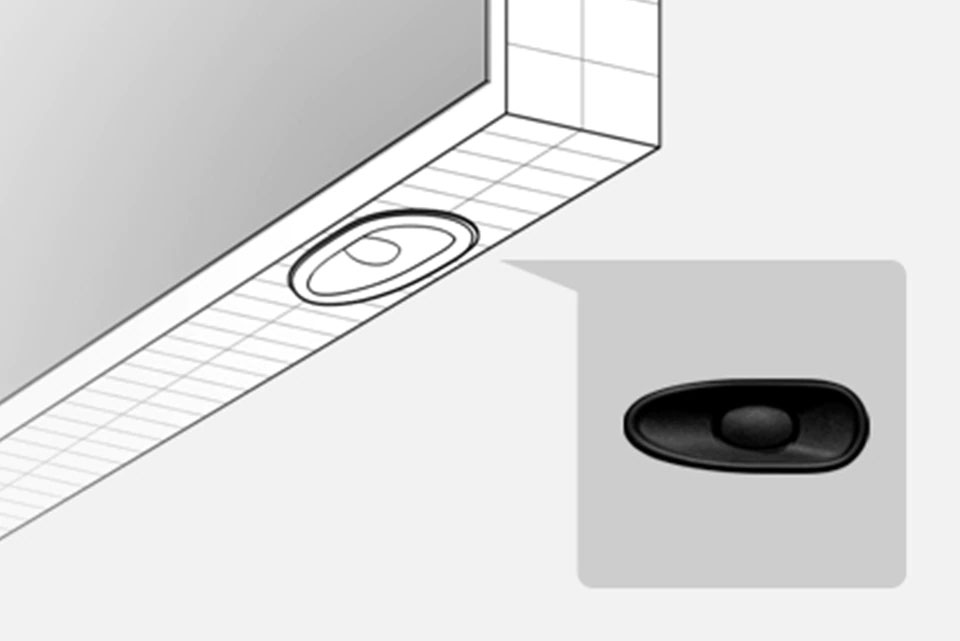
As such the X85K is using a standard 2.0 channels audio system with 20 watts of total power. Again a bass reflex system is utilized and along with their X-balanced speakers, as Sony calls them, they have tried to improve the overall output without changing much in terms of the audio setup being used.
This X-balanced speaker is basically a specially shaped driver in order to provide the best audio result possible for the slimline factor of the TV. Obviously going for a round driver would have a negative effect on the overall TV thickness while an oval driver compromises sound quality. The specially shaped X-balanced driver combines the best of both worlds, at least according to Sony.
Going through various types of content the TV is really capable when it comes to casual viewing but for nothing more. Talk shows, news broadcasting and sports revealed clear dialogue and good overall volume although when pushed too much, compression would be more than noticeable. Movies and TV series sound ok but they loose all their cinematic magic as there no surround immersion whatsoever making the whole experience flat and uninspiring. Get yourself at least a soundbar if you plan on watching movies on this one.
The TV may be a low cost offering but it comes with both Dolby Atmos and DTS support. But having Dolby Atmos doesn’t mean that the TV can reproduce it the way it is meant to. Also keep in mind that Sony is the only of the big three that still supports DTS audio and through its eARC port it can pass not only Dolby Atmos but also DTS:X.
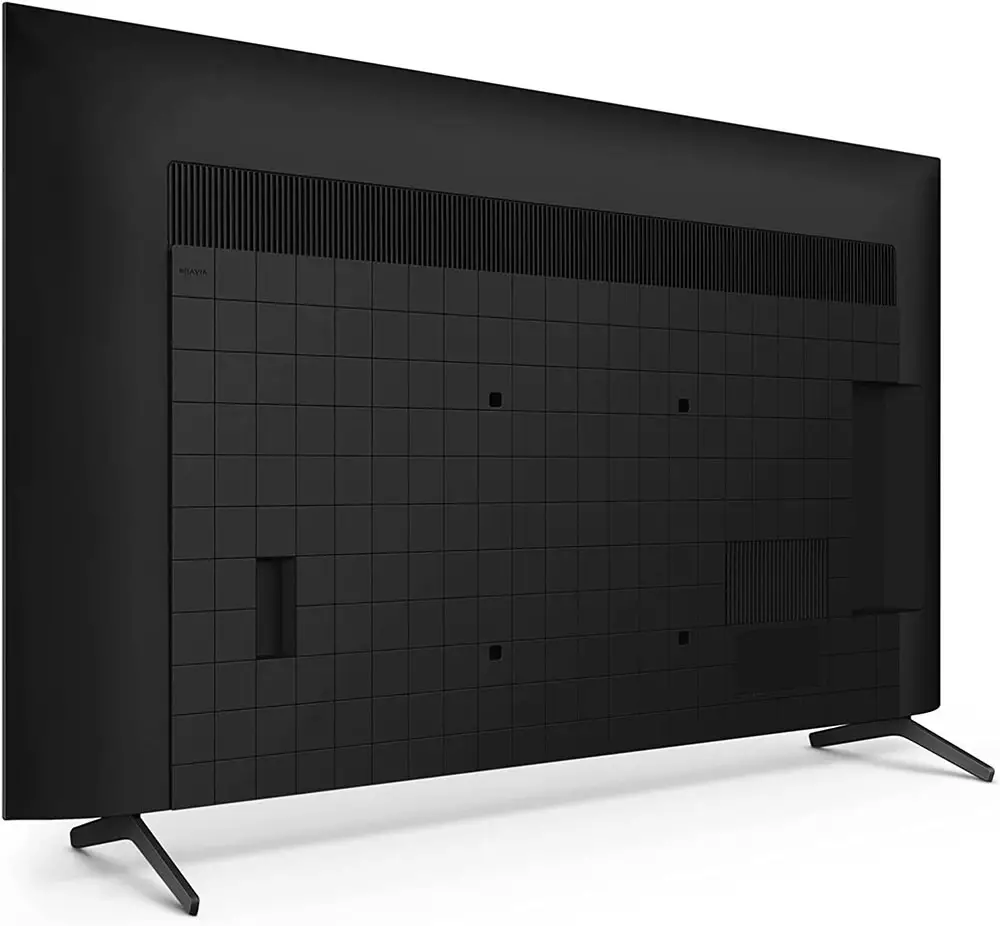
As was the case with 2021’s X85J, the X85K also features Acoustic Auto calibration in order to get the best audio performance no matter your sitting position. This is done by playing various test tones and letting the TV determine the best settings accordingly. This feature can help a little with getting better audio in your viewing position but don’t expect to get far better results than without it.
Ports and Connectivity
In terms of connectivity options the layout we get in the X85K is entirely the same as the X80K and compared to the 2021 X85J there is only the analogue audio output missing which seems to have been taken out from all new models this year.
Going from top to bottom we get two USB ports for connecting external storage or powering various devices, a digital optical audio output for connecting older equipment that does not support HDMI connections, a composite video input, four HDMI ports for connecting all your devices, an Ethernet port for wired connection to your network, an RS-232C port for control, an IR input and the usual antenna/cable connector.
The X85K continues the trend of having a USB 3.0 and we applaud Sony for this. Usually manufacturers don’t seem very fond of using the newer USB ports and rely mostly on the archaic 2.0 version even for many of their top premium models so seeing the X85K, which is a more or less low cost TV, getting one USB 3.0 is definitely a cut above what most other manufacturers offer.
Also keep in mind that you will find two HDMI 2.1 ports along with two more older HDMI 2.0 ones. Although some other manufacturers, like LG, offer more HDMI 2.1 ports at least two are better than one. The problem here is that one of them is also the one with ARC/eARC functionality so if you plan on using that then you are left with a single HDMI 2.1 port. In general keep in mind that all TVs that feature only two ports use Mediatek’s SoC.
In terms of wireless capabilities things are pretty much the same as all other Sony releases so the X85K comes with built-in WiFi (802.11ac) along with Bluetooth v4.2. No Bluetooth 5 from Sony yet.
OS, Apps and Features
The X85K is using the same Google TV platform that Sony is using in all their releases this year and is the same as the one we saw in our other Sony TV reviews recently. In our opinion Sony did the right thing to move from Android TV to Google TV as this proved to offer a better overall experience in comparison.
Now many of you may be puzzled what the difference between Android TV and Google TV is. Well, it’s not so much difficult to understand what has changed really. Google TV is still Android TV but with an extra layer on top of it. Think of it like it is in Android smartphones. Most manufacturers that use Android in their releases they use on top of that their own layer that gives this extra something to their UI that make them unique both in appearance and functionality.

The same is with Google TV. You still basically use Android TV but there is the extra Google TV layer on top in order to make the UI feel different both in looks and functionality. It seems that all 2022 Sony TVs come with the same Google TV 10.0 we saw in last year’s models so almost everything is once again the same as what we experienced a year ago.
Google TV seems to have been designed around recommendations, either it be movies, TV shows or applications and this seems to be the main focus of the new OS in general. During setup the wizard asks you of what specific streaming services you use in order to customize the Home screen recommendations.
Keep in mind that Google TV is still Android at its core even though it looks different. But with Google TV things seem more fluent, more direct and more easy to navigate around.
If there is one thing that Android has in abundance that is huge app support. Through the included Google Play Store you can find literally thousands of apps that you can download and use except from the pre-installed ones. There is so much content available that you will definitely find the ones you are looking for and the list goes on and on.
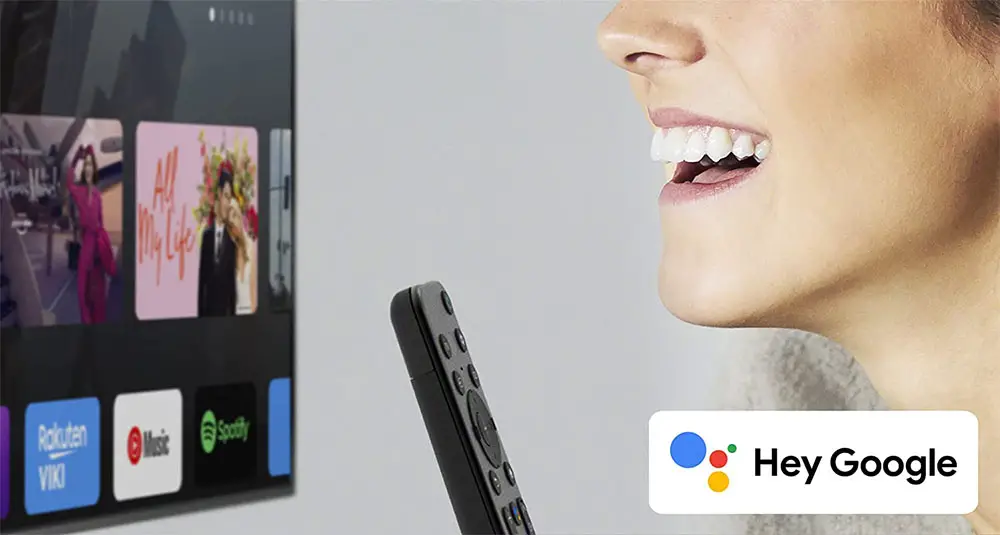
All the big names are obviously present like Google TV, Disney+, Netflix, Amazon Video, Hulu and Youtube as well as Pandora, Tidal, Google Play Music, Spotify or iHeartRadio. As always some of them are region dependent so make sure the ones you are interested in are working in your area. Lastly many apps like Netflix and Youtube support playback for both 4K and HDR content for those interested in it.
Chromecast is also available here and it gives you the ability to stream content from other Chromecast enabled devices like mobile phones and tablets directly to the TV. Voice control is also present but it seems that it is a bit limited compared to other competing models. By that we mean that although you can use the remote’s built-in microphone to give commands to Google Assistant, for Amazon Alexa you will need an external Alexa enabled device to work. Additionally there is also Sony’s Voice Search available.
We have seen the same thing in many other Sony TVs and probably this has to do with the fact that it’s using Google’s Android system and thus having Alexa built-in was not possible. With voice control you can issue various commands to the TV but functionality extends far beyond that as you can control any smart devices you have in your house also.
There is also a built-in media player available that you can use to playback various video and audio content from an external storage connected to the USB ports. Support is pretty good for a built-in player and things surely have improved a lot compared to a few years back when these built-in players would support only the bare minimum.
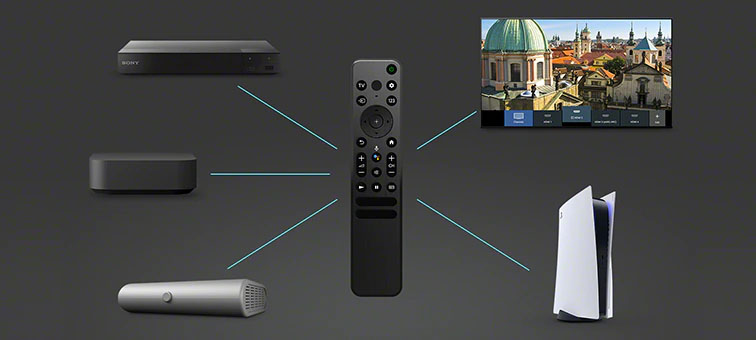
We tried a selection of files and most of them that use standard codecs played completely fine. We do have a couple of files that don’t follow the usual standards, and these failed to playback correctly but this was to be expected. Most other files had no problems at all.
Sony has also added support for both Apple Airplay 2 and HomeKit. With Airplay 2 you can stream content from other Apple devices on your TV while HomeKit lets you control certain aspects of the TV through your mobile device. Also if you are all Apple then keep in mind that the X85K supports Apple TV which is Apple’s online streaming service in order to have the complete Apple’s suite. So in case you favor Apple’s products the X85K will certainly cover you in this respect.
For one more year all Sony TVs are Calman Ready. To address color variations from the production process, the TV is ready to use Portrait Displays’ high-performance Calman auto-calibration software.
This allows an unprecedented level of calibration and the ability to fine-tune adjustments simply not possible through conventional picture settings. It delivers high-fidelity color reproduction that’s true to the original TV signal, and can even adapt to the subtlest changes in color that may occur over time.
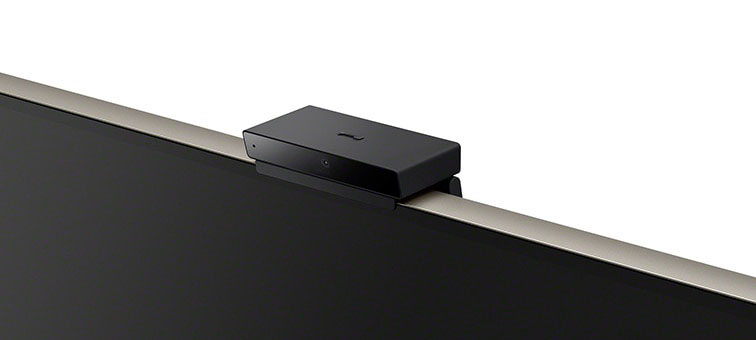
Although almost all features make a return from last year there is one new that Sony added for 2022. It seems that all their TVs now support the new Bravia Cam which is an optional accessory that can be purchased separately and will further enhance the functionality of the X85K.
With the Bravia Cam the TV can detect where you sit in the room and adjust the picture and audio accordingly. Other functions include gesture control and power saving features among others.
One last thing we need to mention is that there is no official app support for controlling the TV. If you want to control the X85K using your mobile device you can use the Android TV app made by Google that supports many of Sony’s TVs the last few years. It’s nothing major but can be a nice alternative to the included remote if you want to have more options.
The TV seems to be missing a few key features that we find in the more premium Sony models including Netflix Adaptive Calibrated Mode, Bravia Core and IMAX Enhanced support. Everything else seems to have been included.
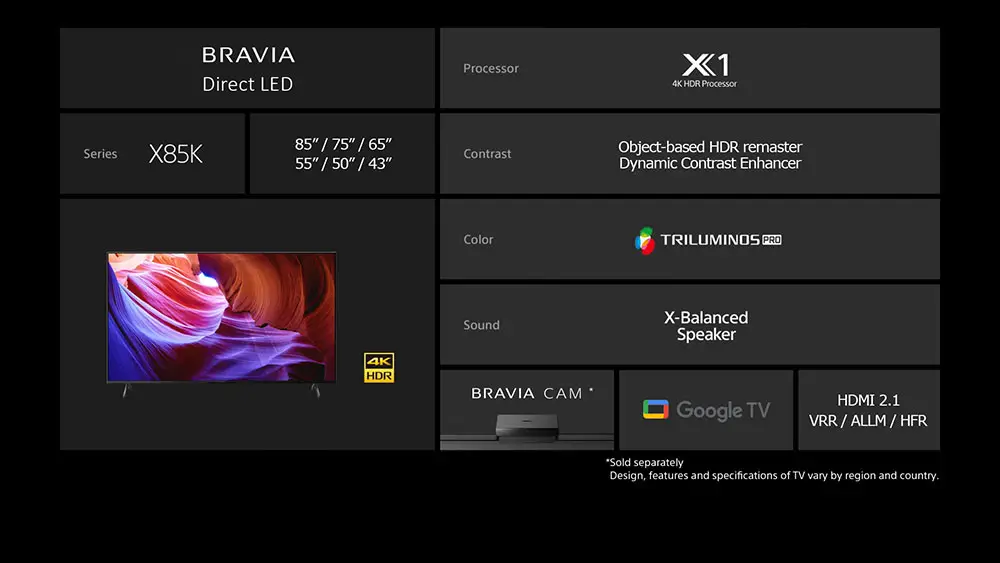
Final Thoughts
The X85K seems more like a repackaged X85J than a new release. We were more or less expecting it to be so as most specs were the same with 2021’s release with minor changes or additions. The most notable change is the inclusion of VRR out of the box this year bringing Sony in line with the rest of the competition.
The inclusion of the X1 4K HDR processor meant that the X85K can handle any content really well for its price. SDR brightness was good, colors were great, input lag was very low and motion handling was ok. Adding the latest Google TV along with HDMI 2.1 and all its gaming features like VRR ensures that the X85K can do great no matter the source material. Also keep in mind that Sony is the only one of the big three that still supports DTS.
On the downsides HDR peak brightness was so and so, the VA panel provides very narrow viewing angles, there is no HDR10+ and the included audio system is adequate only for casual viewing. Lastly, Google TV is missing a few more premium features like Bravia Core and IMAX Enhanced.
The Sony X85K is Sony’s most affordable HDMI 2.1 enabled TV which can be used equally good for gaming and for movies. It has its fair share of problems and will not astonish you with its performance but it has a good performance/price ratio and is really worth it if bought in the right price.

For more reviews you can check our dedicated 4K LED LCD TV reviews list or even look at our Product Reviews Table where you can find the brand and specific product you are looking for.
Cheapest Places to Buy :
*We are a reader-supported website. When you buy through links on our site, we may earn a small affiliate commission at no extra cost to you. Home Media Entertainment does not accept money for reviews.*

How come all Sony tvs are downgraded ??? EVen budget models that arent cheaper in some countries!
Hello Kruger. Not all are downgraded. Some we have tested are very similar to last year. But models being downgraded is a practice we have seen from all manufacturers. When new tech is coming like QD-OLED or mini LED the old tech is downgraded in order to be able to have a natural progression in price across their entire lineup. Not the best practice for us consumers of course but unfortunately this is how the market works and we have all to live with it. That’s why reading reviews like ours is the best way to go. In order to find the best for your budget.
According to RTINGS YEah MINILED X95K sure is bit worse, cause it has lower, COntrast and perform not best in Dark room, its like OLED more into well lit rooms at all, Sony X80K have even as IPS/ADS panel much worse contrast, dropping way down to, 869:1! same price same, model from last year what was 1116:1. SOny X90K altought this year 85″ have much worse Local dimming results in blooming more, visible also new MINILED – have worse blooming too compared to X95J. Also youre right Samsung first hybrid is worse too but underestable, since new technology.
Only OLED seem top notch since LG isnt that bright even it changed bit. Not mention that they raised prices too. LG screwed its lowend-budget models way more too. Also Last years X85J got, hdr peak nearly 600cd/m this year model is “only” 549 barely fits into minimal sphere.
Also you giving way over rating for shit tvs. WHile writing doesnt coressponds for such score.
I Prefer more RTINGS they give it thorough, and even its not that many models you can see, detailed description and update. Most important they dont claim every tv deserves better score, which is misleading and doesnt work good for potential buyer, only if they knew its tv on very money and they cant expect wonders, im sure they knew that and in text its really being said. Still SOny and Samsungs are way better then its equivalents even in budget prices, Cause new TCL tv only 365nits is unacceptable for HDR. Yet in my country theyre cost almost as much as its competitors from more reliable brands.
Hello Kruger. I respect your opinion and I really appreciate your comment. But I will be honest to say that I disagree with RTINGS scores. And the simple reason is that they score comparing a low end model to a high end model. The Sony X80K for example. They gave it a score of 6.8. Such a low end TV would never be able to get good marks the way their scoring system work. And how could a TV that costs $750 (for the 55″) to get a score of 9 or better the way they score them? It’s simple, it can’t. So all low end models look bad according to them.
Keep in mind that there is no cheap TV that can also perform according to what enthusiasts want. That would be the perfect TV but it does not exist. That’s why we prefer to give our scores taking into account the price category of each model we test. Obviously a low end TV will look worse than top tier ones but their prices are vastly different also. RTINGS don’t take into account the pricing in their scores and that’s why all top tier get good scores and lower tier ones look bad.
Keep in mind that not all people are looking for the best quality picture and just want a TV that can do the basic. In this case price is of utmost importance and should always be considered in the scoring system.
Its underestable and while i dont like, scoring (low) much, it makes sens they praise OLED tvs against LED way too much, even they still have burn in and theres recorded experiences they got burn in after only, few months extreme cases is few days a week
But they claim everything, buy by their own and theres only DONATING program that supports them, they compare lowend with midrange but i think thats cause theres not many tvs in its ranges and also have different panels – they dont say its necessarily better tv just have other kind of use, which is true. YOure right lowend never get any better score, which their 6,8-6,6 ( disliking LG tvs but oled) but they also mentioned their scores, isnt general, MOST TVS are for alot users, especially those who have alot light in room, and wide seating.
Still truth is they make more effort then any others, even its not complete and theresa some lacks here there, you get better picture how tv, Performs howeverits not for many from Europe cause their review Strictly USA/CAN versions and there can be always differencies. But its just sad how Sony downgraded much, X85J is better for dark room, since its has 6350:1 ratio while 5340:1 has X85K it can be really good info for some who prefer otherwise its same nearly HDR peak brightness is lower but its all sony tvs have lower contrast and everything this year.
As I said it’s not fare for a low end TV to get a low score just because it performs much worse than a top tier OLED. If their price was the same the low score would make sense. You cannot compare the scores of a $700 LCD TV to a $2500 OLED and say, yes 6.5 is a bad TV, it’s not worth it. Of course it’s bad compared to the OLED, there is a $1800 price difference! That’s why as I said I don’t agree how they score but I totally respect their work and what they are doing.
I have seen the X85K from close at a local store and personally I liked it. Yes, obviously it is not as good as some of the top releases and brightness is lacking but for me it is enough and since I want it mostly for gaming I think your review has convinced me. Thank you a lot.
You are welcome Alex. Glad I was able to help.
Although I have a Samsung TV, if I were to buy a TV right now, I would definitely buy a Sony. I had only but problems with mine for a few years now and I was never completely satisfied with it.
Thanks for the detailed review, I will definitely bookmark your website for when the time comes.
If you need help with deciding let me know.
I think this site did a fare a detailed review of this television. Like stated by Mr. Stratos not everyone is interested in the most expensive top tier technology. Thanks for that great review and keep up the good work.
Thank you Jason for your kind words. Comments like yours give us strength to continue our work with more dedication than ever before.
I agree with your comments…I believe the X85J has the brighter SDR and HDR peakness level, but only by 5%
A very enjoyable read and accurate opinion regarding the X85K and the X85J
Thank you Sir!!
Thank you James. I am glad you liked it. Wish you a very nice day!
I just looked for new 85 inch tv and I am not really sure between sony 85k and samsung q60b. In Black Friday is price very similar.
I need it for sport and movie watching, no gaming.
What will be your recommendation?
Best regards from Austria!
Hello Dario. Although I cannot talk about the 85″ specifically as we tested the 55″ of both TVs if we consider that both of them perform in a similar fashion then the X85K is the clear winner, taking into consideration that you can get them in similar price. The Sony has higher brightness, better colors, Dolby Vision support and HDMI 2.1 ports.
Thank for really fast answer??
Last question, do you as expert see another alternative in this price class?
I find Samsung Q70B, but this one cost at the moment €500.- mire then X85K. Probably is X85K still better deal.
Go for the X85K. It’s a far better deal.
? thanks
You are welcome. Let me know if you need anything else.
Hi Stratos, thanks for your sharing. I am in struggling to choose the TV for my family to watch movies. I am in Canada. In our local Costco, the 85″ X85K is almost same price with Samsung 75″ Q80B, and around $800 lower than 85″ Q80B.
I compared 85″ X85K with 85″ Q80B and couldn’t find much difference in graphic quality. I will buy a Samsung Q990 soundbar to work with the TV to get a better audio performance.
Could you give me your comments which one is better for me ? or recommend other model?
Many thanks!
Hey there. Although I cannot speak for the 85″ specifically as I have tested only the 55″ the Q80B is the better one and that’s why the higher price. The Q80B has higher brightness, lower input lag, better viewing angles and 4 HDMI 2.1 ports. The Sony on the other hand is better with colors, supports Dolby Vision and also DTS.
The fact that you will also buy a Samsung soundbar makes the Q80B an even more attractive option as you can use the Q-Symphony feature and combine the audio capabilities of the TV and the soundbar.
The choice is obvious. If you are looking for the cost saving option the Sony is the one to go for. The Samsung is obviously the better choice but also the more expensive one. If you can afford the budget then go for the Samsung. It will give you much more as a whole.
Tell me if the corners of the screen of this TV are so dark. Is it worth it to ignore it?
Hello Alexandr. The unit I had for testing indeed has slightly dark corners but in our case it was not very bothering. Obviously this is a personal matter so I cannot tell if it will bother you or not. But it certainly didn’t bother me. Maybe the unit I had didn’t have this issue to such an extent as some others.
Hi Stratos. I had the Samsung 65″ Q60B and although the brightness was nice and the overall picture looked great when watching some programs WITHOUT top/bottom or side/side black bars, the light bleed was horrendous and for the life of me can’t understand why others don’t feel the same. The bars themselves were gray, not black, and being edge lit, it was like stage lighting shining up/down from the edges like you’d see at a concert. Or gray with white clouds throughout the black, ahem, gray bars. Additionally, the colors during dark shows (like Netflix’s “Wednesday” that we were watching) were washed out looking with little contrast and detail. I went back to my 8 year old Sony 55/WB800 which has been a FANTASTIC TV, and watched more of “Wednesday” and it was night and day comparison. The show actually has some color to it that I didn’t realize cause I had only watched that show on Samcrap, as well as more details I didn’t notice on the Samcrap and the Sony is only 1080p. Plus the blacks are spectacular including the black bars. They’ve always been true black with no bleed. Only thing I’ll say in defense of the Q60B is I didn’t play around with the settings much. Not sure it would’ve helped those areas though. Some say the bleeding gets better over time, but I wasn’t waiting to find out. I couldn’t return this TV back to the store fast enough cause of the gray bars with light bleed clouding issue. Also the cheap plastic stand sucked too. But I digress.
That brings me to you. I’m now considering the 65X85K, but I’m gun shy now with buying any TV. I don’t want to get in this buying 65″ TV’s only to return for same issues. They’re a PITA to return.
All that said, I have 2 main questions for you:
1) Should I be confident that the X85K won’t exhibit those same issues as the Q60B?
2) Aree there other recommendations you have for something else (sub $800)?
So many critic reviews tout the TCL and Hisense TV’s, some of which cost a couple hundred dollars or more less than the X85k (currently $798). They all say they have far better specs and are a much better value, but are they really better in the long run? I’m just not comfortable with those for some reason. In also considered LG and even Amazon’s Fire QLED cause the picture looks great in the store, but…it’s in the store sooo idk.
Maybe I’m partial to Sony cause I’ve had good luck with them…so far. That doesn’t mean there’s not a chance they wouldn’t disappoint me. However, I think there’s something to be said about the value of piece of mind that needs to be considered. Sony costs more than some in the same class, yes, but they’re known for their longevity and my experience with them has affirmed that for me. Those other brands don’t have the same experience or history so the jury is still out on them IMO and I REALLY fear buying one of those and running into the same Q60B issues. The only reason I’m even upgrading my Sony is cause I want a bigger, crisper screen for sports and movie night, plus my old one is getting a little long in the tooth and lacks some of the things newer TV’s offer. I’m not ready to fork over $1000+ on a TV yet so this is a stepping stone. I’ll wait a couple more years for OLED to come down in price and fix the burn in and brightness issues.
Sorry for such a detailed message but I’ve lost count on the number of reviews I’ve read as well as watched on YouTube for 3 months now, which has left me more confused. Upon reading your review, even more so, your replies to other’s questions/comments, I felt comfortable in reaching out to you about this. You’re the first. Hope you respond. Thanks on advance.
Hello Wade. I am honored to be the first!!! I always want my readers to feel comfortable and always reach out to me for support, suggestions or anything else they want to ask. I will always be here to help to the best of my abilities.
Now as for your question. Well, I can see that you are in big trouble right now, not knowing what to decide. Don’t worry, we have all been there, having second thoughts about a specific product. After all we want our money to count and since you already had a bad experience with the Samsung you definitely would like to avoid this happening a second time.
Let me first tell you about Hisense since you mentioned them. Indeed their TVs have better specs with lower prices compared to the competition and this is something that I have mentioned in the several reviews I have made. But can they stand the test of time? This is something I cannot say since I am reviewing these TVs for a limited time, I don’t keep them for the long run to measure their durability. But my suggestion is this, if you have seconds thoughts about a brand, then avoid it. It doesn’t matter if in the end it turns out to be good, if something does happen you will not forgive yourself for not listening to your thoughts.
As for Sony, I agree. They are pricier than most others. This doesn’t mean that their TVs cannot break down or don’t have problems. As with everything electronic, you play with chances even if you buy a $100,000 TV. So there is always the chance of it going bad or having a bad panel. But in general Sony has good consistency in some of their models and this is something that you have to keep in mind.
Now concerning the problem you mention on the Samsung, this edge light bleed is the result of the Edge LED system and this is not the fault of the Q60B specifically as most Edge LED TVs show this effect to a greater or lesser degree, especially with dark scenes, or as you mention when there are black bars. Your older Sony is a Direct LED TV and this is the reason why it does not show the same problem. Now comparing the Edge LED and Direct LED systems can open up a whole new thread for discussion but for the shake of the conversation let’s just say that since the X85K is using a similar Direct LED system to your older W800 this shouldn’t be a problem.
For the price you mention there are not that many choices really and from the ones available the X85K seems to be a no brainer. Obviously I cannot guarantee you that you will be absolutely happy with it but the chances that you are not going to have all the same problems all over again are high with this one. And in the end I think this is the safest bet you can have right now.
Hi Stratos
Is it worth to spend 300$ more to buy x90k instead of buying x85k?
75 inch is my choice of size..
Hello. Well, it really depends on the person. For me, yes it is worth it. Because the X90K is better in almost every way. So if you have the budget then definitely go for the X90K.